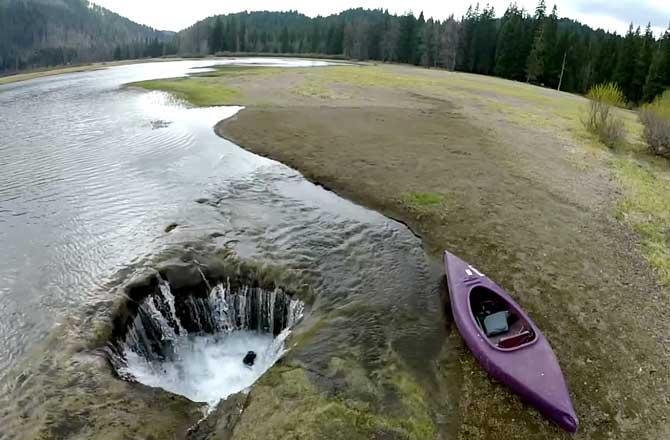Mysterious Lake In Oregon Disappears Every Year. And We Know Why.
Mysterious Lake In Oregon Explained
When it is raining in Oregon, majority of people living in the area probably don’t think too much about Lost Lake, shallow lake surrounded by trees near highway. But people who drive around this mysterious lake might notice a different. During the dry months, the mysterious 85-acre (0.34 square kilometers) vanishes and turns into meadows.
What is the reason, you might ask. It is because two hollow lava tubes at the bottom of the lake are constantly draining the lake, pretty much the same like a bathtub left unplugged.
“The lakebed begins to fill in the late fall. when the amount of rain coming in starts exceeding the ability of the lava tubes to drain off the water. And it continues to fill all winter long in a series of rain or snowstorms,” said Jude McHugh, a spokeswoman for the Willamette National Forest in Oregon.
When the rainy season finishes, the 2.7 meters (9 ft) deep lake loses the water and water disappears down the lava tubes until its gone. The cycle of this mysterious lakerepeats itself every year.
Lava tubes are not something you couldn’t find in Oregon, because it is home to active volcanoes that extends from southern British Columbia to Northern California.
When lava streams flow down a volcano the outside crust cools as it makes contact with air and hot lava continues to flow under the hardened crust. After the hot lava is drained away, the tube remains. Some of these tubes can become a unique ecosystem for animals.
Mysterious lake is located 209 km (130 miles) southeast of Portland. Most likely, the mysterious lake was formed about 3,000 years ago, when lava flowing from a volcanic vent blocked a river channel and created the lake.
We know, why the water is draining, but we do not know, where the water goes, but scientists have some idea. It is very likely that the water falls down the tubes and seeps through layers of cracked volcanic rock as groundwater.
source: weather.com


